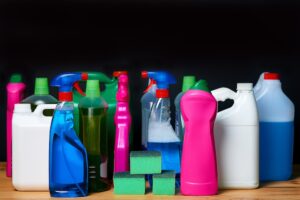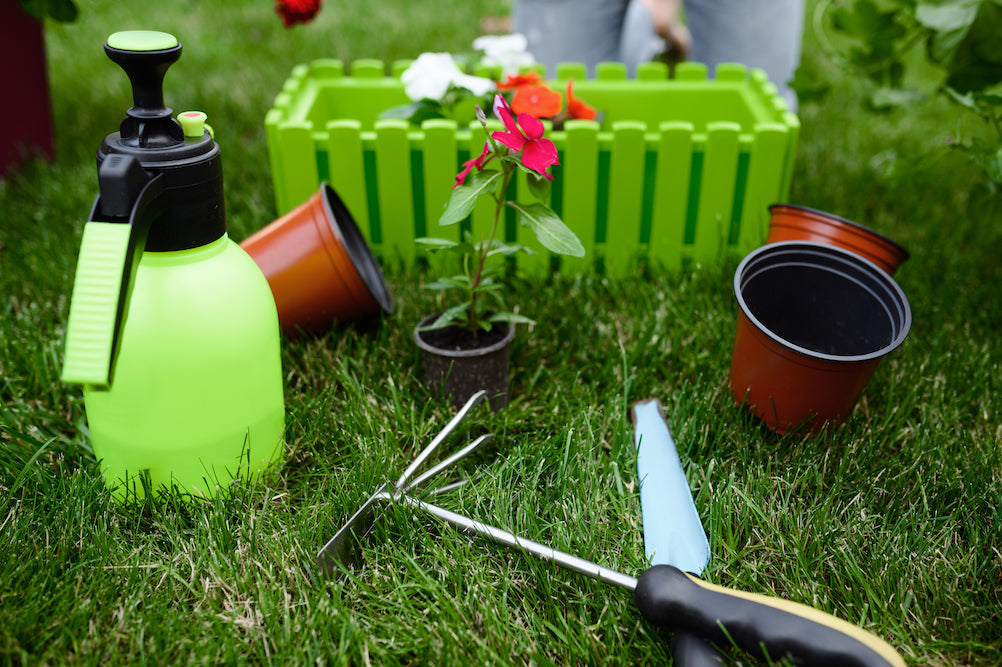Having the right tools is crucial for maintaining a thriving garden. Whether you’re a seasoned gardener or just starting out, equipping yourself with the essential gardening tools and related items will make your gardening tasks more efficient and enjoyable. In this blog post, we will delve into the world of gardening tools and explore their uses, benefits, and how they contribute to a successful garden. We will also discuss some related items that can further enhance your gardening experience.
Essential Gardening Tools
-
Hand Trowel: A hand trowel is a versatile tool with a pointed tip and a handle. It is indispensable for various gardening tasks such as digging small holes for planting, transplanting seedlings, and removing weeds. The pointed tip allows for precise digging, while the compact size makes it easy to handle in tight spaces. When choosing a hand trowel, opt for one with a sturdy construction and a comfortable grip.
-
Garden Fork: A garden fork features sturdy tines and a handle, making it an ideal tool for turning and loosening the soil. It aids in breaking up clumps, aerating the soil, and lifting and moving materials like compost or mulch. The robust construction of the garden fork ensures durability even when dealing with tough soil conditions. Look for a garden fork with ergonomically designed handles to reduce strain on your wrists and back.
-
Pruning Shears: Pruning shears, also known as secateurs or hand pruners, are essential for maintaining the health and shape of your plants. These handheld tools are designed to trim and shape small branches, deadheading flowers, and removing unwanted growth. Choose pruning shears with sharp blades made of high-quality steel for clean and precise cuts. Regular maintenance, such as sharpening the blades and lubricating the pivot, will ensure their longevity.
-
Garden Hoe: A garden hoe is a versatile tool with a flat blade attached to a long handle at a right angle. It is primarily used for breaking up the soil, removing weeds, and creating furrows for planting seeds. The hoe’s flat blade is ideal for slicing through the soil surface, while the sharp edges efficiently cut down weeds. Consider the type of hoe that suits your gardening needs, such as a traditional hoe, scuffle hoe, or collinear hoe.
-
Garden Rake: The garden rake is a valuable tool for leveling the soil, removing debris like leaves and grass clippings, and preparing the soil for planting. It consists of sturdy teeth or tines attached to a handle. Rakes come in various sizes and designs, including bow rakes and leaf rakes. Select a rake that suits the size of your garden and the specific tasks you intend to perform.
Related Items for Gardening:
-
Garden Kneeler: Gardening often involves tasks that require kneeling or sitting close to the ground. A garden kneeler provides comfort and support, reducing strain on your knees and back. These kneeling pads or benches are usually cushioned, providing a soft surface to kneel or sit on. Some garden kneelers can also be flipped over to serve as a seat. When choosing a garden kneeler, opt for one with a durable and waterproof cover for easy maintenance.
-
Garden Hose: A garden hose is an essential item for watering plants, cleaning tools, and various other garden-related tasks. Look for a high-quality hose that is long enough to reach all areas of your garden. Consider the diameter of the hose, as a larger diameter allows for higher water flow. Additionally, choose a hose with sturdy connectors to prevent leakage and invest in a hose reel or hanger for convenient storage.
-
Plant Labels: Keeping track of your plants is crucial for organization and future reference. Plant labels, small tags or stakes, play a vital role in identifying and labeling plants in your garden. They can be made of various materials such as wood, plastic, or metal. Using permanent markers or waterproof labels ensures that the information remains legible over time. Place the labels near the plants or in a dedicated plant labeling area for easy identification.
-
Garden Twine or Plant Ties: Garden twine or plant ties are essential for supporting plants that need extra stability. They help secure plants to stakes, trellises, or other support structures, preventing them from bending or breaking under their weight or adverse weather conditions. Garden twine is available in different materials, including jute, nylon, or plastic. Soft ties made of flexible rubber or fabric are gentle on plant stems. When tying plants, be careful not to constrict or damage them.
-
Garden Sprayer: A garden sprayer is a handheld device used for applying liquid fertilizers, pesticides, or herbicides to plants. It provides precise and targeted application, ensuring that the substances reach the intended areas without harming nearby plants. Choose a garden sprayer with adjustable nozzles to control the spray pattern and intensity. Proper cleaning and maintenance after each use will prolong the sprayer’s lifespan.
Additional Garden Enhancements:
-
Garden Cart or Wagon: A garden cart or wagon is a valuable addition to your gardening tools, particularly when dealing with heavy or bulky items. It allows for easy transportation of materials like soil, mulch, plants, or garden waste. Look for a cart or wagon with a sturdy construction, large capacity, and maneuverable wheels. Some models even come with dumping features for convenient unloading.
-
Soil Testing Kit: The quality of soil directly affects plant growth and health. A soil testing kit helps you assess crucial factors such as nutrient levels and pH balance. By analyzing the soil composition, you can determine the appropriate amendments or fertilizers to use for optimal plant growth. Soil testing kits typically include pH testers, nutrient testing capsules, and detailed instructions on how to interpret the results.
-
Garden Apron: A garden apron with multiple pockets or compartments keeps essential tools, seed packets, and small items within reach while you work in the garden. It helps you stay organized and saves time by eliminating the need to search for tools or materials. Look for an apron made of durable and waterproof material, with adjustable straps for a comfortable fit.
-
Garden Tool Organizer: Proper storage and organization of gardening tools not only keep them in good condition but also save you time and effort. A garden tool organizer, such as a tool shed or wall-mounted rack, provides dedicated spaces to hang or store your tools. Look for organizers with hooks, shelves, and compartments to accommodate different types of tools and equipment. This will help you maintain a tidy and efficient workspace.
Conclusion
Investing in the essential gardening tools and related items discussed in this blog post is a worthwhile endeavor for any gardener. These tools enhance your gardening experience, making tasks more efficient and enjoyable. By having the right tools at your disposal, you can create a thriving garden that flourishes with healthy plants and bountiful harvests. So, equip yourself with these gardening essentials and watch your garden thrive like never before.









Reader Interactions